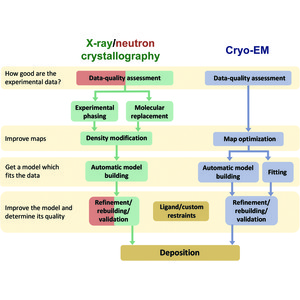

Replace the deuterated buffer with 20 to 50 microliters fresh deuterated buffer at days two, six, and 10 after crystal mounting and reseal the capillary with fresh melted beeswax after each vapor exchange as demonstrated.Īfter at least two weeks vapor exchange, use putty to secure the quartz capillary onto the IMAGINE neutron diffractometer goniometer sample stick that has been secured to the instrument sample stage and lower the sample and stick into the neutron beam and detector area. Use a heat wand to melt a portion of beeswax and gently insert the capillary in the melted beeswax until an airtight seal has formed.

Use a thin paper wick to carefully dry the crystal and dry the capillary walls and add 20 to 50 microliters of deuterated buffer solution to the end of the capillary. Tap the tube to move the reservoir buffer and crystal down the capillary and use a long thin pipette to aspirate the solution from around the crystal. Use a mounting loop to gently place the crystal into the reservoir buffer within the quartz capillary. Use an appropriately sized microloop to harvest a crystal and place the crystal in the drop of reservoir solution.įor crystal mounting, take a two millimeter diameter 50 millimeter length quartz capillary, aspirate reservoir buffer with a pipette and fill one end of the capillary with reservoir buffer. Crystal capillary mounting is not routinely performed, making demonstration of this technique instructive.įor crystal harvesting, open the sealed sandwich box containing the protein crystals in a nine-well large volume siliconized glass plate and use a micropipette to transfer 10 to 20 microliters from the crystallization reservoir solution onto a glass slide. To perform neutron protein crystallography, large fragile protein crystals are mounted in quartz capillaries for room temperature data collection. Proteins with photosensitive groups or metallosensors can be studied without suffering from radiation damage. In contrast to x-ray diffraction, neutron diffraction has the advantage of being a non-destructive technique. Neutron structures reveal protonation states and water molecule orientations to elucidate reaction mechanisms and binding interactions. Neutron crystallography is a structural technique for determining hydrogen atom positions in biological macromolecules.


 0 kommentar(er)
0 kommentar(er)
